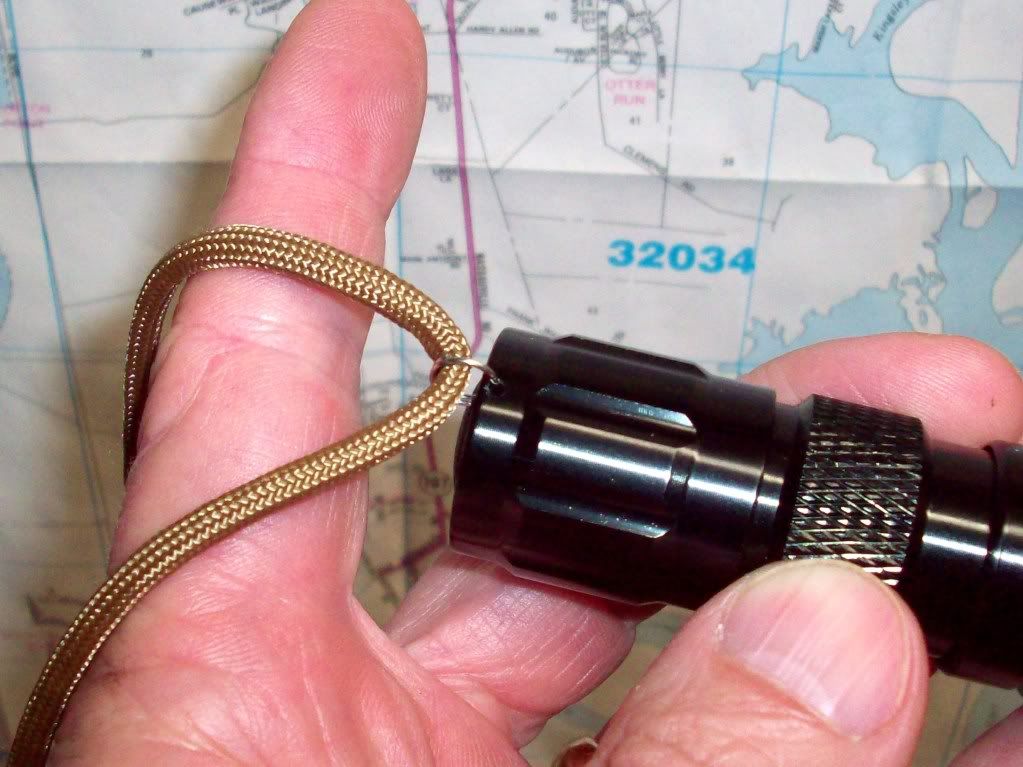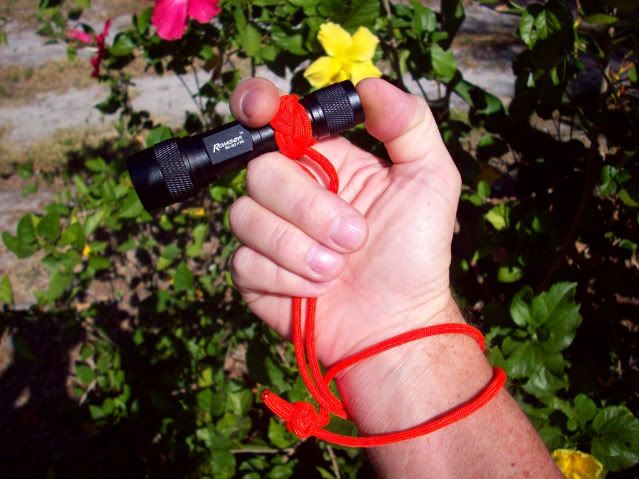OK, so my split rings came in today along with my Seaguar 50# test leader material. It’s significantly heavier than the line used in the “free” lanyards supplied with many lights. If one wanted to go heavier it would be possible, but 50# test is pretty good.
I’ll try to post pics tomorrow (by editing this post) after the superglue dries and my cord stoppers come in so that I can finish the lanyards.
So far the 2 I like best are also the easiest to make and have reduced hardware.
The first one I made used existing hardware. It’s overly complex with too many parts that can fail. But it is quickly detachable from the light. That can be done in other ways and with fewer parts. The knot that is invisible was coated with glue and allowed to cure before reassembly. The leader material goes through the plastic connector and the knot keeps it from pulling through. The hole in the plastic part is the weak link in this lanyard IMO, and I don’t trust it.
The second one used a split ring and simple loops made with overhand knots in both the leader material and the cord. I used a polyester shoelace for the cord. Simple and effective. I cannibalized the stopper from another lanyard from a different flashlight. I like this lanyard. All knots got the glue treatment after being pulled tight with long nose pliers.
The 3rd uses the Albright Special knot and no hardware at all. It’s leader material, cord, glue, and nothing else. If you’re on a budget and want a super simple lanyard, well, I like this one a lot. Again, the knots were moved into place and them pulled tight with pliers. Put the pliers on the ends that will be cut off so as not to compromise the material.
There is another that I haven’t tried yet, and it uses the hardware that comes with the free lanyards. It consists of a piece of paracord and leader material. Basically take apart one of the supplied lanyards and notice how simple it is. It’s a piece of heat cut cord and the light line goes through it and the plastic “connector” hides what’s going on inside. It would be as simple as making the same loop of leader material made with an overhand knot, put the running ends through the hole in the “connector first. At this point you’ll have a loop of leader material going through the plastic connector. Put some paracord through the loop formed on the big open end of the connector . Put a stopper in place and run the running ends of cord through it. Tie the running ends with an overhand knot to form the wrist loop. Glue all of the knots and after curing slide the plastic connector (actually just a cosmetic piece, but it does serve a function) Over the knot in the leader material and pull it over the junction of the cord and leader. What function does it serve? OK, cosmetic, but it also prevents the leader and cord from chaffing each other. It should work, but so far I haven’t tried it.
After I get my stoppers, and they should be in tomorrow, I’ll post pix. Pix make the text more understandable.
Could any or all of them have quick disconnects? Absolutely. I just wanted to keep parts to a minimum since more parts mean more places to have problems. Can you add 6” of tubing to make the lanyard more comfortable on the wrist? Absolutely. I see no need for it though.
Pix soon.

